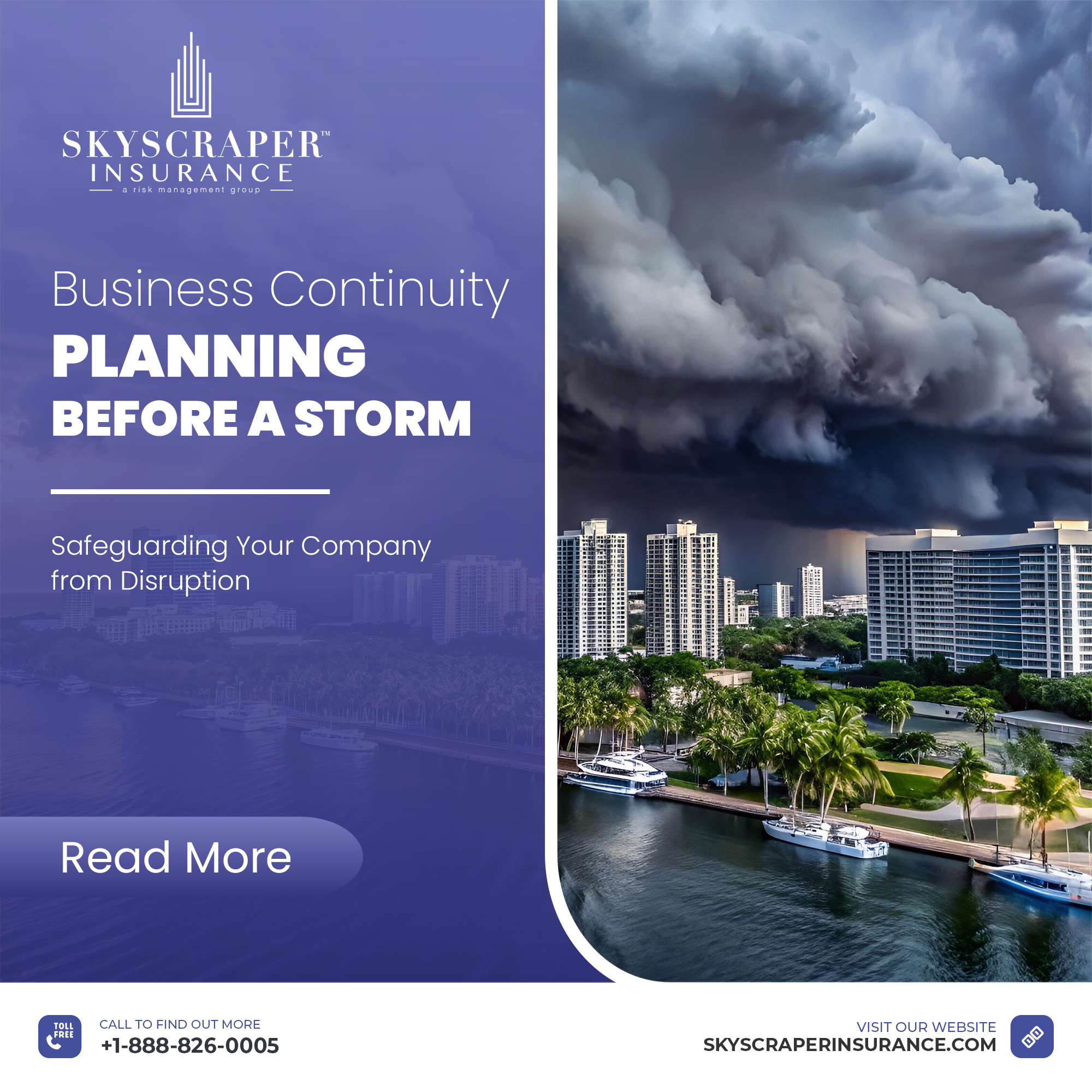As Florida faces the looming threat of hurricanes each season, it’s critical for businesses to take proactive steps in safeguarding operations, employees, and assets. Effective business continuity planning (BCP) can make all the difference between surviving a storm with minimal disruption and facing long-term operational setbacks. 🌩️
Here are key strategies to help your business prepare for the inevitable:
1. Assess and Understand Your Risks
Start by identifying the risks specific to your business. Is your office located in a flood-prone area? Do you rely on coastal shipping routes? How would a power outage affect your services? Understanding your vulnerability helps prioritize which areas need immediate attention.
2. Develop a Communication Plan
In the event of a hurricane, seamless communication is vital. Establish an internal emergency contact list, including alternate ways to connect in case of network failures. Create a communication chain to ensure every employee is aware of the steps to follow before, during, and after the storm. 📞
It’s also essential to inform customers and clients about any potential service disruptions and establish a plan to maintain customer support, whether through remote means or emergency hotlines. 📱
3. Back Up Your Data and Critical Systems
Hurricanes can lead to extended power outages or physical damage to IT infrastructure. Regularly back up all data to secure off-site or cloud-based storage. Ensure that essential business applications and systems can be restored quickly in case of damage to physical hardware. 💾☁️
4. Secure Your Property and Physical Assets
Safeguard your business premises by investing in physical protections such as storm shutters, sandbags, and waterproofing. Don’t forget to move valuable equipment to safe locations and inspect emergency generators for readiness in case of extended power outages.
Insurance coverage is also a key component of protecting physical assets. Make sure your insurance policies are up to date, and assess whether you have sufficient coverage for property damage, business interruption, and liability claims related to storm damage. 🏢💡
5. Plan for Remote Work and Operational Continuity
If employees are unable to come into the office due to unsafe travel conditions or damage, it’s important to have the infrastructure in place for remote work. Ensure that your employees have access to necessary tools, software, and information to work effectively from home. 🏠💻
Additionally, outline contingency plans for essential functions—such as customer service, finance, and operations—so they can continue without interruption.
6. Run Drills and Test Your Plan
A business continuity plan is only as good as its execution. Regularly conduct drills and simulations to test your emergency plans. This will help identify gaps and allow you to make adjustments before a real storm hits. 💪
By following these steps, businesses can be better equipped to weather the storm and emerge stronger on the other side. Business continuity planning is more than just insurance coverage; it’s about building resilience into your everyday operations to ensure long-term success.
At Skyscraper Insurance, we’re here to help you build and refine your risk management strategies, ensuring that you and your business are protected before, during, and after the storm. 🌟
Stay tuned for more safety and recovery tips as we guide you through the entire storm season process. Stay safe, stay prepared!




